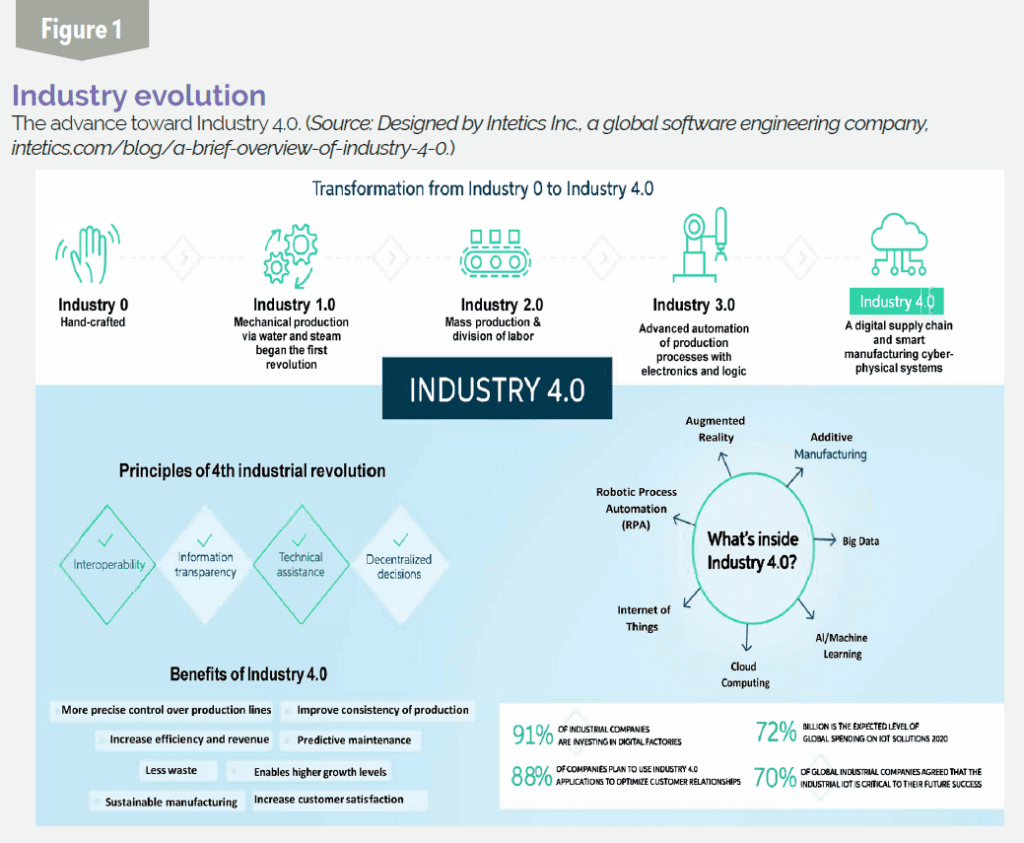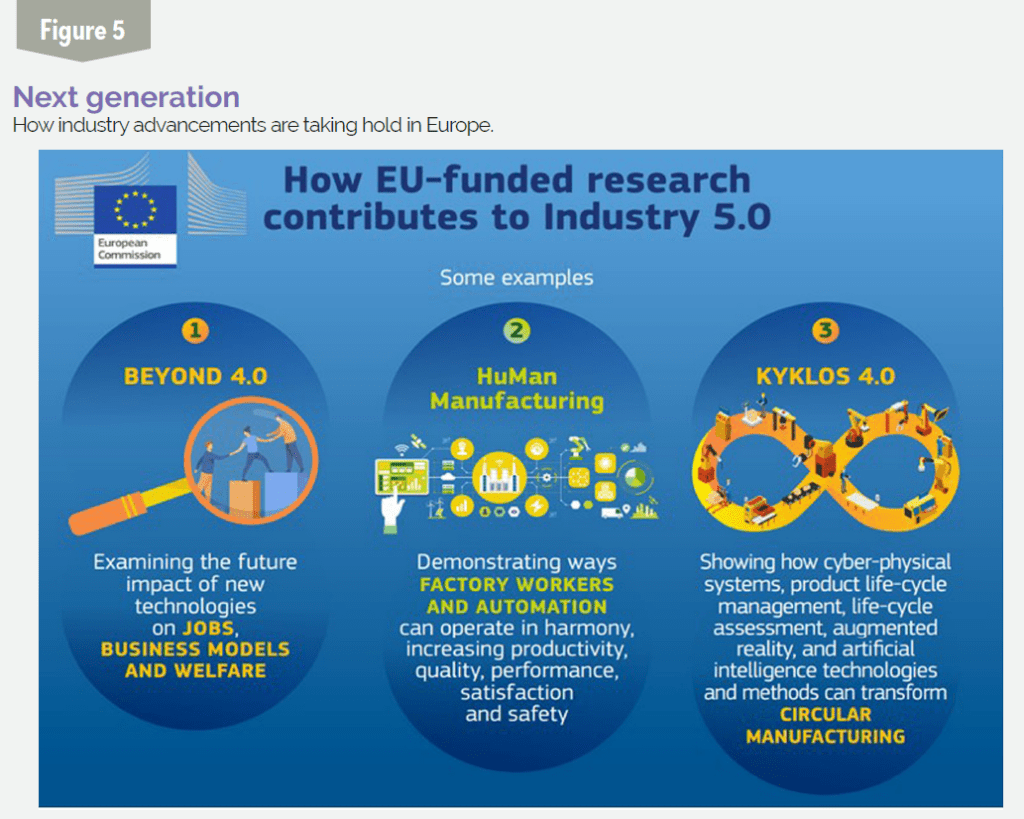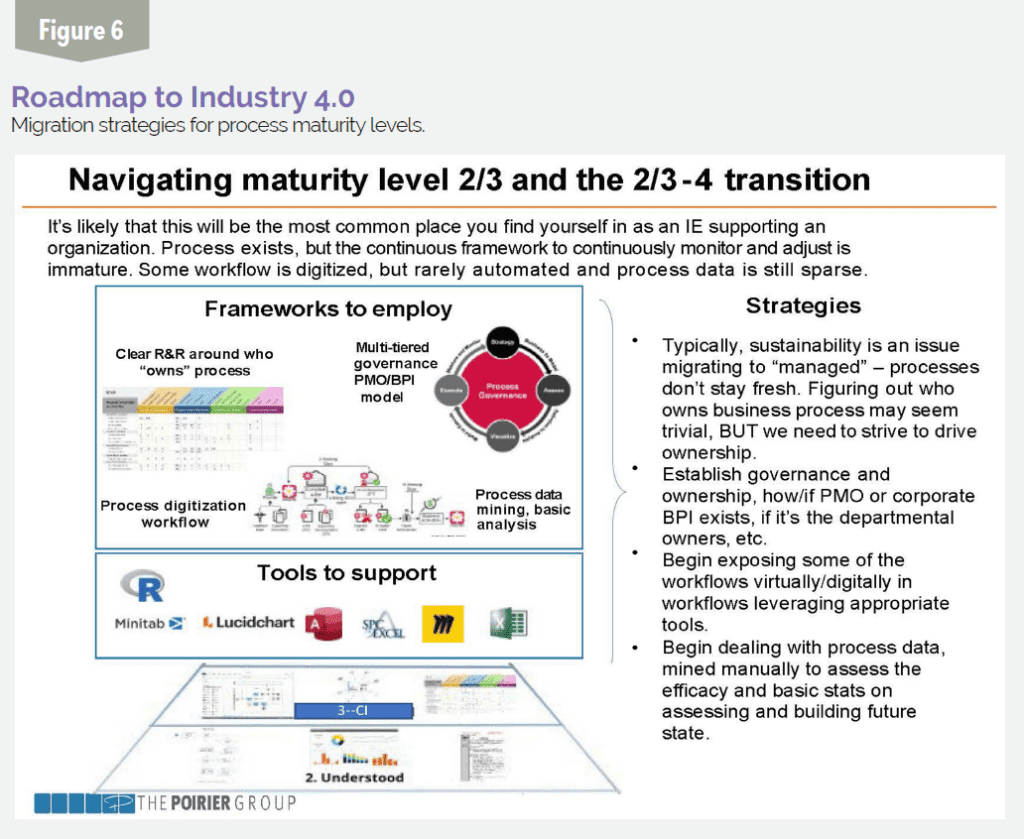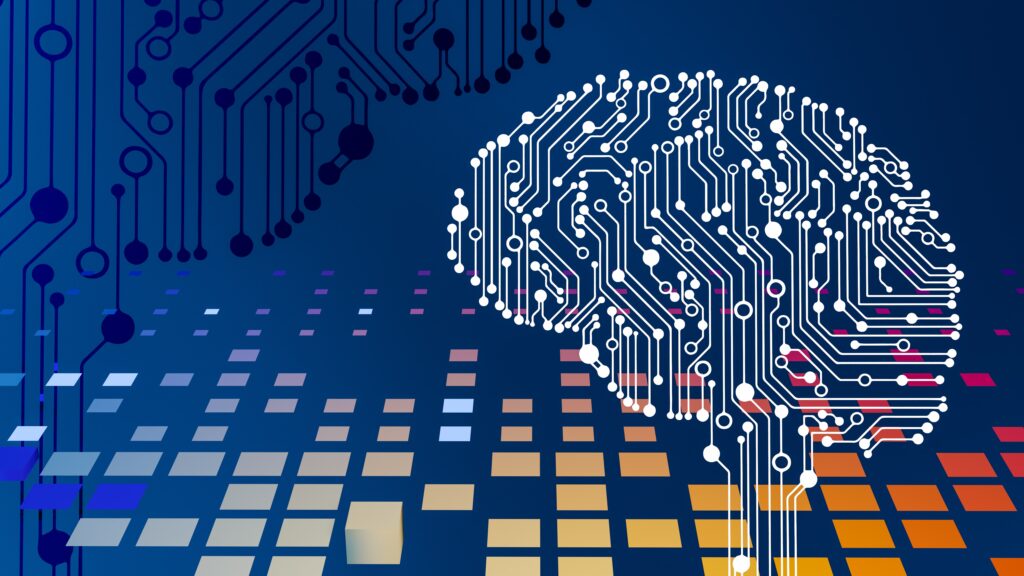Webinar series explores impact of technology innovation
IISE has been sponsoring a Global Performance Excellence Webinar Series for the past four years. Most recently we have been doing several miniseries webinars focused on specific topics: Resilience in the ’20s, Business Process Management, Integrated LeanSigma, Operational Analytics and most recently artificial intelligence (AI).
At the completion of each topical miniseries, we have provided a capstone article in ISE. This feature caps off our most recent AI miniseries. Our featured panelists – subject matter expert ISEs and selected Council on Industrial and Systems Engineering (CISE) members – have provided most of the food for thought.
The eight important laws of technology (makeuseof.com/important-tech-laws-explained) are driving the rate at which integrated digitalization is occurring in products and services and how industry produces those products and services. AI is concurrently fueling all the technology innovation and enabling smart automation. We are experiencing unprecedented product and service life cycle shifts, the shrinking of life cycles, increase in the requirement to bring new features and functionalities to life faster and better.
So the need to capitalize on smart automation to improve quality, productivity, reduce costs and waste is what’s driving the Industry and Service 4.0 migration. Additionally, new product and service design and development supported by information technology enablement and by component technology innovation is concurrently putting pressure on business process improvement and management. Process maturity levels are under siege by the rate of change that is occurring in product and service life cycles.
We can’t discuss AI outside the context of the larger trend we call Industry 4.0 and 5.0. The megatrend ISEs are learning to master and work with and help their organizations integrate into the way they get things done is what’s known as Industry 4.0 and 5.0. We’ve borrowed the image in Figure 1 from the Internet of Things to help make this point. You can see AI/machine learning (ML) positioned clearly as a key component of Industry 4.0.

What is AI?
The experts tend to agree that AI “is use of science and engineering (software or hardware) to create intelligent machines that can make and/or act on decisions that usually require organic intelligence.” My ISE perspective leads me to conclude that it is “smart automation.”
ChatGPT is perhaps the most talked about example of AI evolution at present. But the breadth and depth of the AI expansion into products, services and how we create and deliver products and services is much bigger and broader than that. From a technology perspective, the image in Figure 2 (Page 30) provides a sense of what’s involved behind the scenes.
On the front end of this evolution, we all have experienced the systematic, rapid and steady increase in use of AI in the world around us. In our Part 3 webinar, I discussed some practical, personal examples of AI at work. From point of sales to the coupons we receive each week from our favorite grocery to Google Maps, to vacation planning, to pre-emptive preventative maintenance in the factory or warehouse, to order replenishment, to automated cruise control and more, AI is creeping into the very dimension of how we work, play and live our lives.
I recently saw a Home Depot commercial when someone was laying tile and ran out of spacers. He took a photo of the spacer, used the retailer’s app, and it told him if it was in stock, location of closest store and the actual bin location to find the spacers.
On the surface, we take this for granted as almost magic – “Neat, they can do that.” But we all know the engineering, creativity, innovation and hard work behind the scenes are what bring those convenience tools to life for us. And it helps give the company a leg up against the competition. But not for long – it is not whether you are doing this; it’s how fast you are doing it.
Industrial and systems engineering is rapidly becoming best known as integrated systems engineering, and ISEs are looked upon to make sense of AI, ML and deep learning and to lead the way as change agents for their evolving capabilities. This critical new role coupled with our contributions in operational analytics and business process optimization is making ISE one of the most demanded degrees/competency areas for the 2020s.
What is Industry 4.0 and 5.0?

Let’s start first by focusing on the end game. Some of what we are experiencing is, as discussed, being driven by the eight laws of technology and the fact that technology and information enablement have been improving at unprecedented rates. We are using Industry 4.0 because we can; it’s the logical application of all this digital transformation happening.
But businesses don’t just do things because the technology is there to do it. They do it to grow enterprise value. They do it to grow the customer base, grow share of wallet, improve loyalty. In short, they do it to improve profitability. The image in Figure 3 is simply an illustration of this.
It is useful to discuss AI in the context of what’s called Industry 4.0 and most recently 5.0. In layman’s language, Industry 4.0/5.0 is all about the exponential growth in the automation of processes driven by digitalization and the rapidly expanding ability to store, move, organize and process huge amounts of data better and faster (two of the laws of technology advancement).
There are many portrayals available to study on the domain of Industry 4.0 and 5.0. Just search online for Industry 4.0 images and scan through them. The image in Figure 4 highlights key components of what is happening in Industry 4.0. The image chosen for 5.0 highlights developments in Europe on what is being called 5.0. I think Figure 5 (Page 32) gives you a sense of the focus of things in this movement called 5.0. You will perhaps note that Industry 4.0 is primarily focused on how we create products and services. As we mentioned, AI is infiltrating not just how we create and deliver products and services but also the products and services themselves. New product and service life cycles are a critical component to consider as we understand the potential for AI.
The integrated innovation from suppliers of smart technology to the producers of products and services is well-honed, and working well and it has driven very rapid product and service life cycles over the past five to 10 years.
How AI becomes the key driver in product/service innovation (life cycles)
The integration of smart components, subassemblies and the integration of how product and service components are brought together in more efficient fashions is at the heart of Industry and Service 4.0. In our Part 3 webinar, I discussed close-to-home examples, from retail grocers and one-to-one coupons weekly to automated cruise control in my wife’s car (and how different it is from my 2020 Jeep’s cruise control). Understanding how AI is around us in our daily lives helps ISEs internalize the task of helping organizations plan and execute on the infusion of smart automation of workflows. The end goal is to improve productivity and quality, reduce lead times and cycle times, improve quality of work life (augment human thinking and effort in positive ways), and ultimately to ensure that our organizations can and do survive these “Roaring ’20s.”


Many product and service life cycles are being dramatically impacted by the accelerated technology, digitalization and enablement innovation taking place. This innovation in features, functionalities, capabilities of technology and components in systems (products and services) essentially is shrinking service life. It’s not really that things are becoming obsolete faster; it’s more planned or technology-driven obsolescence. Customers have been conditioned to be attracted to new features, and functionalities and have been willing to pay for those. Providers are learning how to produce and create these more efficiently. The end result of this process that’s been happening for many years, but is accelerating, is that it places pressure on the delivery processes. How do organizations accommodate, process-wise, this impact of new technology innovation? Our focus in this webinar miniseries has been on AI but also on how it impacts business process improvement and Management 4.0 – how ISEs can tap into the power of AI smart automation to make processes more agile and more able to keep pace with the fierce competitive landscape that requires product and service innovation. The challenge is for ISEs to help organizations understand how to continue to improve process maturity levels in the face of constant product and service innovation. Changes in products and services force changes in how we create, deliver and support those improved products and services.

CISE perspectives and points of view
In our fourth webinar in this AI miniseries, we assembled a panel of leaders of the ISE function from CISE to share their perspectives and points of view on AI. CISE has been in existence for over 40 years and is affiliated and partners with IISE. It is essentially an affinity group of ISE leaders from a diverse group of industries. We meet twice a year with between-meeting monthly learning calls. For more information on CISE, feel to reach out to me.
Our members from GM, Flex, Boeing and UPS are clearly advanced and advancing very rapidly with ongoing business process improvement initiatives that increasingly integrate smart features and functionalities, e.g., integrating AI. This video, “How is Industry 4.0 driving advanced manufacturing?” (link.iise.org/industry40_video) provides an example of what’s happening with most of the larger organizations in the world (thanks to our Flex member, Eduardo Toledo, for sharing this).
I came away from the webinar with our CISE subgroup, and also from ongoing conversations in our calls and meetings, concluding that the larger organizations are well down the migration path with Industry 4.0 but are still challenged by tough decisions that have to be made relating to technology innovation. The path forward for the GMs, Boeings and Flexes of the world is laid down, getting clearer and the pace is picking up. I also concluded that most organizations, even the big guys, are still struggling with operational analytics. We’re still swimming in seas of data and struggling to utilize all the data at our disposal. I encourage you to tap into IISE’s on-demand webinar library and view our CISE Panel conversation on AI and Industry 4.0 (iise.org/webinararchive).
Challenges, opportunities for SMEs integrating AI into Industry 4.0 strategy
There are tremendous pressures to accelerate smart automation innovation, and to push the right levers (place the right bets) for continued competitiveness and profitability. The big guys are devoting a lot of resources to this area for improvement. Small- and medium-sized enterprises that constitute the largest percentage of most countries’ economies, however, do not have the same resources to bring to bear on this migration and evolution. In the U.S., SMEs represent half of the jobs and 40% of the total gross domestic product (GDP). That number is much higher in other developed countries.
The focus of our latest webinar on AI and Industry 4.0 and BPM 4.0 featured Jared Frederici outlining a systematic strategy for building a strategy and plan for a doable migration path forward. How do we apply AI to products and services and create the capability to innovate faster and better with what we offer our customers? How do we improve our product and service life cycle management process? How do we, concurrently, improve our design, development, production, assembly, distribution and logistics systems and processes so that we are doing order fulfilment faster and better? And how do we do all this in the face of limited resources and most importantly limited knowledge and skills regarding what to do and how to do it?
These are the types of questions that most SME leaders are confronted with on a daily basis. Jared outlined the migration strategies for process maturity levels 1-2 to 3, and then 2-3 to 4 (Figure 6). This tested roadmap is an example of what is needed in SMEs as they begin to explore how to move in the direction of increasingly smart automation.

What’s next?
We’ve only just begun: AI, Industry 4.0/5.0, Business Process Management 4.0, Operational and Organizational Excellence, the Lighthouse initiative, Operational Analytics the ISE way, and more. It’s a tremendously dynamic, exciting, unique time to be an ISE with so many possibilities. I’d encourage you to learn more about the Lighthouse Initiative. Eduardo Toledo, VP of Quality and Operational Excellence for Flex, introduced CISE to this initiative. A nice article on “Lighthouses” can be found at link.iise.org/mckinsey_lighthouses. We plan a webinar dedicated to the Lighthouse Initiative in the near future. Our goal with these webinars and with these capstone articles is to continue to serve our members and customers of IISE. We can do this by providing cutting edge, thoughtful, provocative webinars as virtual learning opportunities on a broad range of timely topics on Performance Excellence.
D. Scott Sink is a past president of IISE and currently a member of the Council on Industrial and Systems Engineering. He served as vice president of business process improvement for two firms in Toronto, Canada, from 1997-2007. Before that, he was a professor at Oklahoma State University and Virginia Tech. From 2007-2020, he led the Integrated Lean Sigma Certification Program in ISE at The Ohio State University. He currently is a senior adviser with the Poirier Group in Toronto.
At The Poirier Group, our significant experience and business consulting services span many industries. Our proven track record of delivering tangible and pragmatic sustainable results comes from a blend of analytical rigour and creative problem-solving, empowering our clients to unlock their full potential through the adoption of new technologies that will advance digital transformation, data management and inevitably your company’s ability to remain competitive.
Learn more about how we can help.

